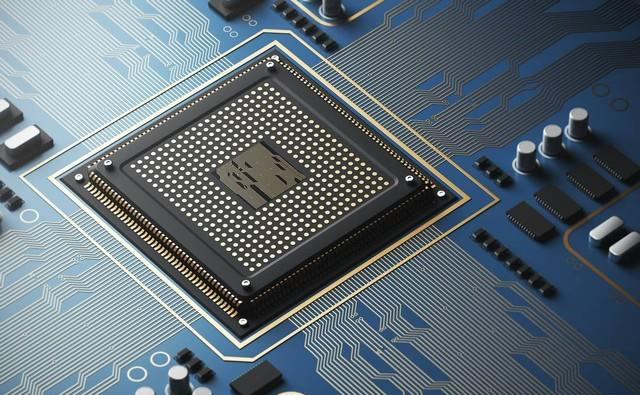Welcome Here Shenzhen Mingjiada Electronics Co., Ltd.

sales@hkmjd.com

sales@hkmjd.com

Service Telephone:86-755-83294757
 Latest Information
Latest InformationADI LTC1992HMS8 Low Power Fully Differential AmplifierShenzhen Mingjiada Electronics Co., Ltd., as a globally renowned authorised independent distributor of electronic components, offers the ADI LTC1992HMS8 low-power fully differential amplifier in st…
ADI LTC1992HMS8 Low Power Fully Differential Amplifier
Shenzhen Mingjiada Electronics Co., Ltd., as a globally renowned authorised independent distributor of electronic components, offers the ADI LTC1992HMS8 low-power fully differential amplifier in stock. This product, with its exceptional signal processing capabilities and ultra-low power consumption, provides high-performance analogue component solutions for industries such as industrial automation, communication equipment, and automotive electronics.
LTC1992HMS8 Product Overview:
The LTC1992HMS8 is an unconstrained fully differential amplifier designed for applications requiring high-precision signal processing. It is widely used in differential drive/receive, single-ended to differential conversion, and level shifting applications, and is particularly suitable for use in space-constrained and power-sensitive devices.
LTC1992HMS8 Specifications
Number of Channels: 1 channel
GBP - Gain-bandwidth product: 3.2 MHz
SR - Slew rate: 1.5 V/us
CMRR - Common-mode rejection ratio: 90 dB
Output current per channel: 30 mA
Ib - Input bias current: 400 pA
Vos - Input bias voltage: 250 uV
Supply voltage - Maximum: 11 V
Supply Voltage - Minimum: 2.7 V
Operating Supply Current: 650 µA
Minimum Operating Temperature: -40°C
Maximum Operating Temperature: +125°C
en - Input Voltage Noise Density: 35 nV/√Hz
Input Noise Current Density: 1 fA/√Hz
Input Bias Current: 150 pA
Maximum Input Resistance: 500 MΩ
Output type: Rail-to-rail
Power supply rejection ratio: 80 dB
Unit weight: 100 mg
LTC1992HMS8 Product Technical Features:
The LTC1992HMS8 integrates multiple advanced technologies, providing an ideal solution for precision signal processing. The device is housed in an 8-pin MSOP package (dimensions: 3mm × 3mm), achieving outstanding electrical performance in an extremely small footprint. One of its core features is an independent internal common-mode feedback path, enabling the LTC1992HMS8 to achieve exceptional output phase balance (typically better than 0.1°) and significantly reduce second-order harmonic distortion (THD typically below -80 dB), thereby greatly enhancing signal fidelity.
Programmable gain capability is another key highlight of the LTC1992HMS8. The series includes fixed-gain versions (LTC1992-1, LTC1992-2, LTC1992-5, and LTC1992-10, with gains of 1, 2, 5, and 10, respectively) and gain-adjustable versions to meet the needs of various application scenarios. All models use precise on-chip resistors for gain setting, maintaining a gain error of ±0.3% (maximum) over the -40°C to 85°C temperature range, with a low temperature coefficient of 3.5ppm/°C and long-term stability of 5ppm, ensuring measurement consistency and long-term reliability under various environmental conditions.
The LTC1992HMS8 demonstrates exceptional power supply adaptability. The device supports single-supply operation from 2.7V to 11V or dual-supply operation from ±1.35V to ±5.5V, with a typical quiescent current of just 700μA (maximum 1mA), making it particularly suitable for battery-powered portable devices. Its unique VOCM pin allows users to independently set the output common-mode voltage (independent of the input common-mode level), simplifying signal level conversion design. The input range covers rail-to-rail, with the common-mode voltage range extending from the negative power supply to the positive power supply minus 1.3V. The output can provide up to 10mA of drive current and can stably drive capacitive loads up to 10,000pF.
In terms of precision parameters, the LTC1992HMS8 performs exceptionally well. The device has a typical input offset voltage of 250 μV (maximum 2.5 mV) and an input bias current as low as 2 pA, causing minimal load effect on high-impedance signal sources. In terms of frequency characteristics, the gain-bandwidth product is 3.2MHz, and the slew rate reaches 1.5V/μs, enabling it to handle signals with bandwidths up to hundreds of kHz, meeting the requirements of most industrial sensing and audio applications. These characteristics collectively form the core competitiveness of the LTC1992HMS8 in the field of precision signal conditioning.
Performance Advantages and Application Scenarios of the LTC1992HMS8:
The LTC1992HMS8 demonstrates significant advantages in multiple industrial fields thanks to its exceptional electrical performance and flexible application characteristics. Compared to traditional differential amplifiers, this device achieves breakthrough improvements in signal integrity, system simplification, and power consumption control, providing design engineers with a higher-performance solution.
Interference resistance is one of the core advantages of the LTC1992HMS8. Its fully differential architecture provides an extremely high common-mode rejection ratio (CMRR typical value >90dB), effectively suppressing power supply noise, ground bounce interference, and common-mode signals introduced by electromagnetic coupling. This makes it particularly suitable for use in high-noise environments such as industrial automation. For example, in motor control systems, the LTC1992HMS8 can accurately extract the small differential voltage across the current sensing resistor while ignoring the high-frequency switching noise generated by the motor, providing the control system with precise current feedback signals.
In sensor interface applications, the LTC1992HMS8 demonstrates unique value. Its rail-to-rail input capability allows direct connection to various bridge-type sensors (such as pressure sensors and load cells), while the programmable output common-mode voltage (set via the VOCM pin) simplifies interface design with an ADC. A typical application is an electronic scale system: it amplifies the millivolt-level output signal from the load cell sensor while setting the common-mode voltage to the midpoint reference voltage of the ADC, eliminating the need for additional level-shifting circuits, thereby improving accuracy and reducing BOM costs.
The LTC1992HMS8 also performs exceptionally well in communication systems. Its low distortion characteristics (harmonic distortion < -80dBc) and fast settling time (achieving 0.01% accuracy in approximately 500ns) make it an ideal choice for differential line driving/receiving. In RS485 communication interfaces, using the LTC1992HMS8 as a line driver enables longer transmission distances and higher data rates while consuming only half the power of traditional solutions, significantly improving energy efficiency.
Portable medical devices are another important application area. The LTC1992HMS8's low power consumption (operating current < 1 mA) makes it highly suitable for battery-powered bioelectric signal acquisition devices such as ECG and EEG systems. In these applications, amplifiers typically need to process bioelectric signals ranging from microvolts to millivolts while suppressing electrode DC offset of several volts and 50 Hz/60 Hz power line interference. The LTC1992HMS8's high gain accuracy and excellent CMRR performance, combined with its low noise characteristics (input voltage noise density of approximately 15 nV/√Hz), ensure accurate extraction and digitisation of weak signals.
![[TI] INA193AIDBVR 500kHz Current Sense Amplifiers——Current Shunt Monitor](/upload/202508/25/202508251455390711.jpg)
Time:2025-08-25
![[Genuine Original Product] Infineon IGBT Module_FZ900R12KE4_1200V/900A Industrial Grade](/upload/202508/25/202508251435528213.jpg)
Time:2025-08-25

Time:2025-08-25

Time:2025-08-25
Contact Number:86-755-83294757
Enterprise QQ:1668527835/ 2850151598/ 2850151584/ 2850151585
Business Hours:9:00-18:00
E-mail:sales@hkmjd.com
Company Address:Room1239, Guoli building, Zhenzhong Road, Futian District, Shenzhen, Guangdong
CopyRight ©2022 Copyright belongs to Mingjiada Yue ICP Bei No. 05062024-12

Official QR Code
Links: